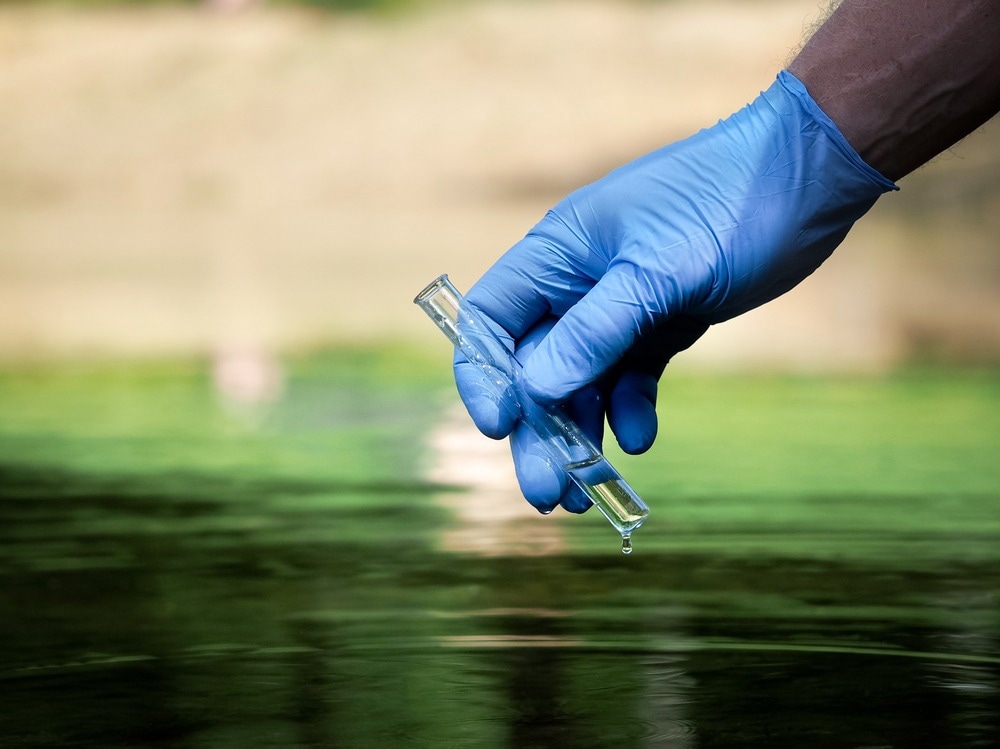Water is essential for life, and its pollution is a major concern. These pollutants, coming from various sources, can have harmful effects on human health and the environment, and as such, monitoring is crucial. Advancements in nanotechnology through nanosensors bring solutions to challenges encountered using traditional water quality monitoring methods.

Image Credit: Irina Kozorog/Shutterstock.com
In this article, we will explore the role of nanosensors in detecting water pollutants, how they work, their potential applications in ensuring safe and sustainable water resources for future generations, and an industry overview.
Why is Water Quality Monitoring Important?
Water pollution can have severe impacts on human health and the environment. Various contaminants in water can cause diseases, such as cholera, typhoid fever, and hepatitis A. Moreover, water pollution can harm aquatic life and disrupt ecosystems, leading to biodiversity loss and ecosystem service degradation.
Therefore, detecting water pollutants is crucial for identifying sources of contamination and taking prompt actions to prevent further pollution.
Currently, various techniques are used for water quality monitoring, such as chemical analysis, biological assays, and physical measurements. These techniques involve collecting water samples and analyzing them in a laboratory. However, these techniques have limitations such as low detection limits, time-consuming analysis, high costs, as well as lack of real-time monitoring capabilities.
Moreover, these techniques often require skilled personnel and sophisticated equipment, making them unsuitable for field applications. Therefore, new technologies are needed to overcome these limitations and provide sensitive and real-time monitoring of water pollutants.
Using Nanosensors to Detect Water Pollution
Nanosensors are devices that can detect and quantify analytes, such as water pollutants, at the nanoscale level. Nanosensors use various principles based on surface plasmon resonance, fluorescence, and electrochemistry, to detect analytes in water.
These sensors consist of nanoscale materials, such as nanoparticles, nanowires, and nanotubes, that have unique properties, such as high surface area and sensitivity, which make them suitable for sensing applications.
The working principle of nanosensors is based on the interaction between analytes and the nanomaterials, which results in a measurable signal, such as a change in color, fluorescence, or current.
For example, a common type of nanosensor is the metal oxide semiconductor (MOS) sensor, which uses metal oxide nanowires to detect volatile organic compounds (VOCs) in water. The MOS sensor operates by detecting changes in electrical resistance when VOCs adsorb onto the nanowire surface. The change in resistance is proportional to the concentration of VOCs in water, enabling real-time monitoring of VOCs in water.
Nanosensors can detect contaminants at low concentrations, enabling early detection of pollution and preventing exposure to harmful levels of contaminants.
Nanosensors can also be used to detect microorganisms, such as bacteria and viruses, in water. Microorganisms can be a major source of waterborne diseases, such as cholera and typhoid fever, and they can also cause algal blooms that can be harmful to aquatic life. Detecting the presence of microorganisms in real time enables prompt action to be taken to prevent the spread of disease or the development of algal blooms.
General Overview of the Nanosensors Industry
The global market for nanosensors is expected to grow at a compound annual growth rate (CAGR) of 11.0% from 2019 to 2026, reaching about USD 1.3 billion in 2026. The growth of the market is being driven by the increasing demand for nanosensors in a variety of industries, including:
- Water quality monitoring
- Environmental monitoring
- Food safety
- Healthcare
- Defense
Some major companies that are involved in the nanosensor industry include:
- Biosensors International
- Danaher Corporation
- Emerson Electric
- Honeywell International
- Ion Science
- Mettler Toledo
- Qiagen
- Siemens
- Thermo Fisher Scientific
- Xylem
These companies are developing new and innovative nanosensors that are more sensitive, faster, and portable than traditional methods. These advances are making it possible to monitor water quality, environmental conditions, food safety, and other important parameters more effectively and efficiently, which is helping to protect human health and the environment.
Conclusion
In conclusion, detecting water pollutants is crucial for safeguarding human health and the environment. Nanosensors offer a promising solution by providing high sensitivity and selectivity in detecting trace amounts of pollutants that traditional monitoring methods might miss.
Nanosensors have the potential to revolutionize water quality monitoring, protecting human health and the environment and ensuring safe and sustainable water resources for future generations. While there are still challenges to overcome, the development and commercialization of nanosensors can create new business opportunities and drive economic growth in the environmental technology sector.
Nanosensors hold great promise in improving water quality, monitoring and management, and it is also essential to address concerns regarding their reliability, accuracy, cost-effectiveness, scalability, and potential environmental and health risks associated with the use of nanomaterials.
References and Further Reading
Hairom, N.H.H., Soon, C.F., Mohamed, R.M.S.R., Morsin, M., Zainal, N., Nayan, N., Zulkifli, C.Z., Harun, N.H. (2021). A review of nanotechnological applications to detect and control surface water pollution. Environmental Technology and Innovation 24, 102032. https://doi.org/10.1016/j.eti.2021.102032
Kumar, V., Guleria, P. (2020). Application of DNA-Nanosensor for Environmental Monitoring: Recent Advances and Perspectives. Current Pollution Reports 1–21. https://doi.org/10.1007/s40726-020-00165-1
Allied Market Research (2019). Nanosensors Market Size, Share and Growth | Analysis - 2026 [Online]. Allied Market Research. URL https://www.alliedmarketresearch.com/nanosensors-market (accessed 5.7.23).
Potes‐Lesoinne, H.A., Ramirez‐Alvarez, F., Perez‐Gonzalez, V.H., Martinez‐Chapa, S.O., Gallo‐Villanueva, R.C. (2022). Nanomaterials for electrochemical detection of pollutants in water: A review. Electrophoresis 43, 249–262. https://doi.org/10.1002/elps.202100204
Zulkifli, S.N., Rahim, H.A., Lau, W.-J. (2018). Detection of contaminants in water supply: A review on state-of-the-art monitoring technologies and their applications. Sensors and Actuators B: Chemical 255, 2657–2689. https://doi.org/10.1016/j.snb.2017.09.078
Disclaimer: The views expressed here are those of the author expressed in their private capacity and do not necessarily represent the views of AZoM.com Limited T/A AZoNetwork the owner and operator of this website. This disclaimer forms part of the Terms and conditions of use of this website.